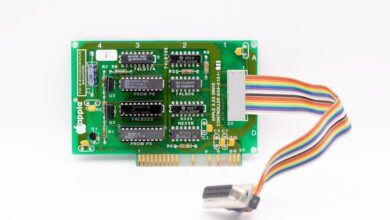The Great AI Talent Hunt… and Sudden Halt

If you’ve been following the whirlwind of AI news lately, you might have done a double-take at the headlines surrounding Meta. On one hand, we’ve seen reports of the tech giant pouring astronomical sums into AI talent, luring top researchers with offers reportedly reaching hundreds of millions of dollars. On the other, just weeks and months later, news broke of Meta cutting hundreds of positions from its AI division. It’s a head-spinning contradiction that seems to defy logic: why spend so much to acquire the best, only to turn around and let people go? This isn’t just a simple case of corporate belt-tightening; it’s a strategic pivot, a calculated gamble that offers a fascinating glimpse into the evolving dynamics of the AI race.
The Great AI Talent Hunt… and Sudden Halt
To truly understand Meta’s recent moves, we need to rewind a bit. For most of 2025, Meta was on an unprecedented AI talent acquisition spree. The company made a colossal US$14.3 billion investment in Scale AI, bringing its CEO, Alexandr Wang, on board as Meta’s first-ever Chief AI Officer. Mark Zuckerberg himself made it clear: he was focused on “building the most elite and talent-dense team in the industry” for his new Superintelligence Labs.
The numbers were staggering. Meta reportedly poached more than 50 researchers from rivals like OpenAI and Google, with whispers of US$100 million signing bonuses for the brightest minds. Names like Shengjia Zhao, Jiahui Yu, and Shuchao Bi—all top-tier researchers—were brought into the fold, promising a new era of AI innovation for Meta.
The Unexpected Turn
But here’s where the plot thickens. Just weeks after this aggressive recruitment drive, something shifted. In August 2025, Meta quietly paused hiring for its AI division. Then, reports began circulating that the company was laying off approximately 600 employees from its AI units. These cuts primarily impacted Meta’s established FAIR AI research, product-related AI, and AI infrastructure teams within Superintelligence Labs, shrinking its workforce to just under 3,000. It felt like watching a sprinter accelerate at top speed, only to suddenly slam on the brakes mid-race.
On the surface, it’s baffling. Why commit such immense resources to attract talent, only to then pare down significant portions of the existing workforce? It’s enough to make anyone wonder if Meta had a sudden change of heart, or if something more intricate was at play.
Beyond the Headlines: A Strategic Realignment
The truth, as often happens in the fast-paced world of big tech, is more nuanced than the headlines suggest. Meta isn’t retreating from AI; it’s recalibrating its strategy in a massive way. According to an internal memo from Meta Chief AI Officer Alexandr Wang, the cuts were aimed at addressing an “overly bureaucratic structure.” His reasoning? “By reducing the size of our team, fewer conversations will be required to make a decision, and each person will be more load-bearing and have more scope and impact.”
This reveals a deeper concern that reportedly stemmed from CEO Mark Zuckerberg’s dissatisfaction with the performance of existing AI efforts, particularly the lukewarm reception to Meta’s Llama 4 models released in April. The implication was clear: throwing more people at the problem wasn’t yielding the desired breakthroughs or improvements.
The “New Guard” Takes the Helm
What makes these layoffs particularly telling is who wasn’t affected. The newly-formed TBD Lab unit, home to many of the highly-paid, top-tier AI recruits from the summer, was spared. This suggests a deliberate pivot. Meta’s AI unit was reportedly seen as bloated, with teams like FAIR and various product-oriented groups often competing for critical computing resources. The restructuring appears to be a calculated bet on the “new guard”—the expensive, fresh talent brought in under Wang’s leadership—over legacy teams that perhaps hadn’t delivered the rapid, impactful results Meta was seeking.
It’s a daring move: consolidating power and resources around a smaller, more agile core team. This leaner structure, Meta hopes, will be more efficient, less encumbered by internal politics, and ultimately, more capable of delivering the groundbreaking AI advancements Zuckerberg envisions.
What This Means for the Broader AI Industry
Meta’s actions resonate far beyond its Menlo Park campus. The timing, for one, is striking. Just a day before the layoffs, Meta secured a colossal US$27 billion financing deal with Blue Owl Capital to fund its Hyperion data centre in Louisiana—a massive investment in AI infrastructure. This juxtaposition is stark: cutting AI personnel while simultaneously pouring tens of billions into AI hardware. It unequivocally signals that Meta’s commitment to AI isn’t wavering; it’s merely being redirected and intensified in specific, targeted areas.
This brings up crucial questions for the entire tech industry: Are we seeing the peak of the AI hype cycle, where simply accumulating talent isn’t enough? Meta’s experience suggests that organizational structure, decision-making speed, and team coherence are as vital as individual brilliance. As tech analyst Dan Ives described it, Meta is in “digestion mode” after a spending spree, a “natural resting point” before its next big leap.
The Challenge of Consolidation
Despite the layoffs, Meta continues to hire for its TBD Lab unit, and Zuckerberg has reiterated that AI initiatives will drive significant expense growth in the coming years. What we’re witnessing is not a retreat, but a highly strategic consolidation. Meta is creating what I like to think of as a “startup-in-a-giant,” shielding its prized recruits while trimming organizational fat elsewhere.
The true test will be whether Meta can successfully redeploy the affected talent internally, as Wang’s memo encouraged, or if those skills will eventually find their way to competitors. The AI talent wars are far from over; they’re simply entering a new, more refined phase where strategic alignment trumps sheer volume.
A Deliberate Strategy, Not a Contradiction
So, the apparent contradiction of Meta hiring and firing AI workers isn’t contradictory at all. It’s a deliberate, even ruthless, strategic realignment. Meta is betting big on a leaner, faster, and more focused approach to AI development. It’s a company cutting away the old to make room for the new, streamlining bureaucracy, and placing immense trust—and resources—in a select group of high-impact individuals to deliver the next generation of AI breakthroughs.
Whether this gamble pays off remains to be seen. But one thing is clear: Meta’s approach reflects a broader truth permeating the AI industry today. Success isn’t just about throwing money and people at the problem. It demands the right structure, a crystal-clear strategy, and, increasingly, the courage to make difficult decisions about what—and who—to prioritize in the relentless pursuit of innovation. The future of AI, it seems, will be built not just by brilliant minds, but by precisely organized, highly efficient teams.





